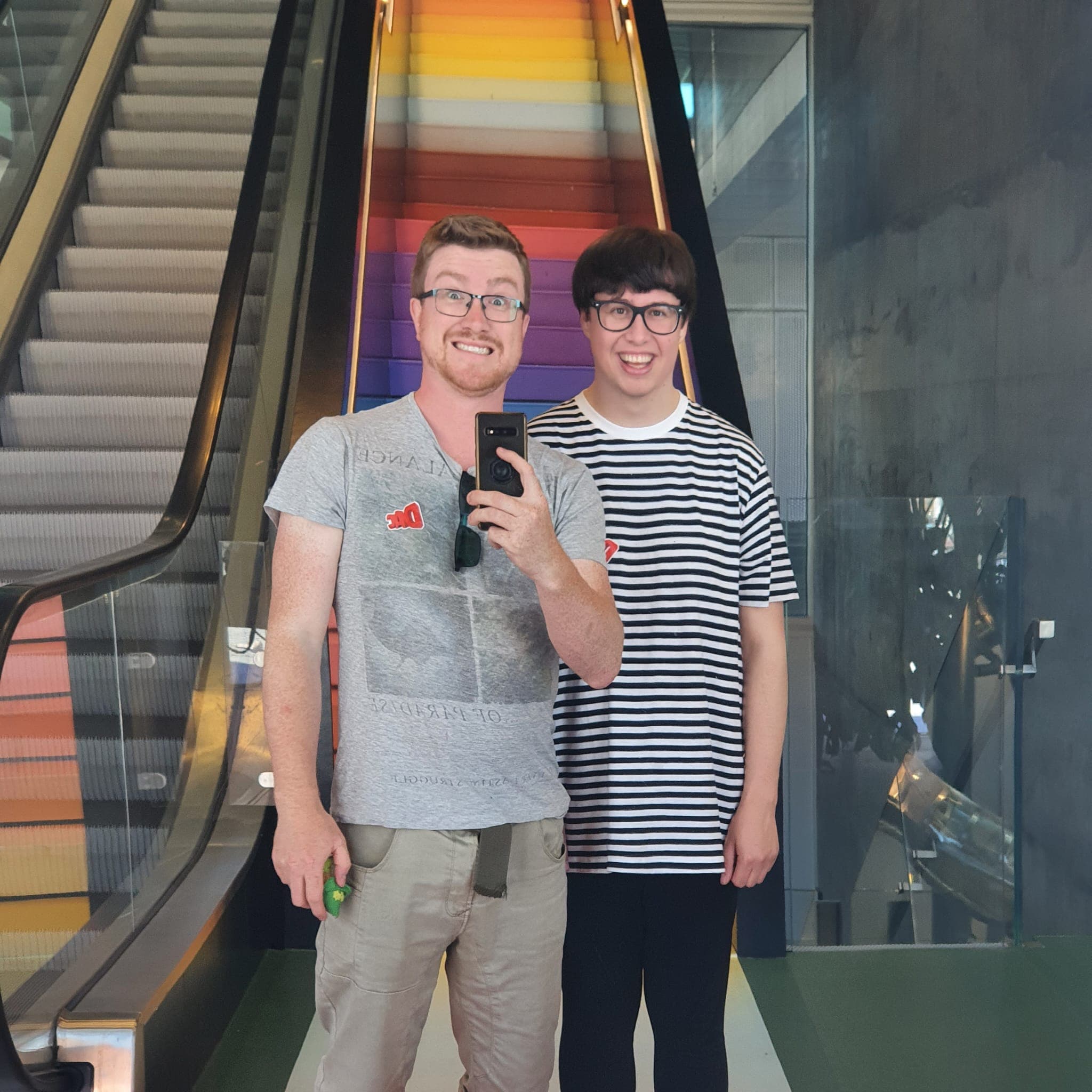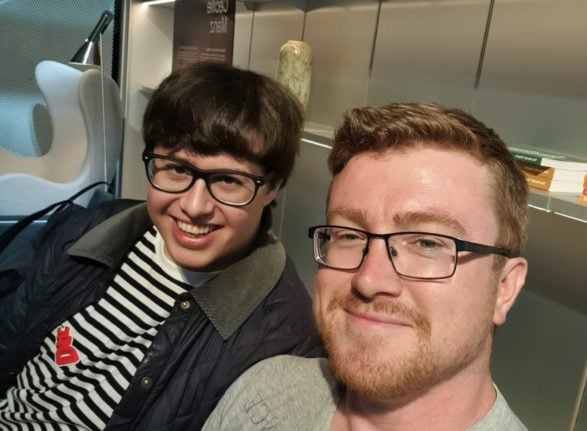Nathan Lloyd’s obsession with Scandinavian design was born in the second-hand, charity, and antique shops he use to love going to as a teenager growing up in Wales, and also by being “blown away” by his first visit to Ikea in Cardiff.
“I’ve always been interested in loppis-ing, charity-shopping, antiquing, and then, within my lifetime, things that were on sale in charity shops became very much en vogue: post [the TV series] Mad Men, mid-century design very much became a thing, it was very cool again, and a lot of those design icons are Danish, Finnish, Swedish, and some of them Norwegian as well.”
“I just connected the dots. ‘Oh, wait a second, a lot of these seem to be Nordic’. And then that, together with IKEA, and the minimalism, and the clean lines, is just a nice little marriage really.”
When he met his partner Tom, their Nordic interest was one of the things that drew them together, although Tom’s Nordic nerdiness was more based around the Scandi crime literature that had filled his parents’ bookshelves.
“He’s written a few short stories based on Nordic noir, And then he’s also read the whole pantheon, you know, Maj Sjöwall, Per Wahlöö, and all the Wallander series.”

Their first house together in Swansea became a sort of exhibition of Nordic design, and whenever they travelled together, Lloyd would seek out Nordic things to see, visiting the Scandi Kitchen restaurant and café in London, the Icelandic Café in Brighton, the Institute Suedois in Paris.
Then, when he won a scholarship to study in Berlin, he ended up writing a paper on the Nordic influences on the city.
The couple finally ended up moving to Malmö almost by accident. They had found some cheap flights to Copenhagen, and decided on a whim to pop over to the other side of the bridge to visit a friend, who they found living in what Lloyd describes as “the perfect rental apartment”, on top of the roof of the city’s Caroli shopping centre.
“It’s this glass box, very architecturally designed, very design forward. And he himself is head designer at a company,” Lloyd remembers. “So we looked at his life as this wild, unattainable pipe dream that we could aspire to but never get there.”
After they got home, however, they suddenly began to consider whether something close to it might, in fact, be possible, with Tom, a teacher, starting to look for jobs at international schools in southern Sweden.
When Britain voted to leave the European Union, they decided to make a move. “We just thought, ‘we really have to do this now or we might never be able to’,” Lloyd says.
Rather than design, Lloyd has thrown himself into Malmö’s food scene, working as head guide for Matkaravan, a food tour company, and making artisanal ice-cream at Köld, an ice cream shop. He’s also big into Nordic music.
It’s, surprisingly, a very creative place. I think it’s the cold, dark winters,” he says. “It’s like Iceland, ridiculously creative for the size of its population. The dark winters facilitate a need for creativity.”

One of fashion buyer Max Cunningham’s first ever posts on Facebook, aged 12, was, “Max wants to move Sweden”.
“Whenever it comes up in my Facebook memories, I’m like, ‘God, that’s spooky’,” he says.
For him, the appeal was not only design, but the way it is integrated into Swedish society.
“I was just kind of, you know, ‘Everything’s very nice. Everything’s very clean. Everything works. Every Swede I’ve met is really friendly’. I’ve thought of it as being the good, progressive country.”
He had also made close friends with a Swedish girl while at university, so when he split up with his boyfriend he decided to make the move to Sweden, and got a job as an assistant buyer with one of Sweden’s biggest, multinational clothes retailers. That didn’t work out, so he is now working as a product developer for a smaller Swedish brand.
Since moving to Stockholm in 2019, however, he’s started to see the downside of Sweden’s minimalist, unfussy approach to fashion and design.
“Everyone looks the same. That’s something you just massively notice, especially when you see younger people, especially younger Stockholm people,” he says. “There is such a uniform of how they dress, what they buy, the colours, the way they wear their hat, the shoes. It’s very same-y and that’s quite strange.”



 Please whitelist us to continue reading.
Please whitelist us to continue reading.
Member comments